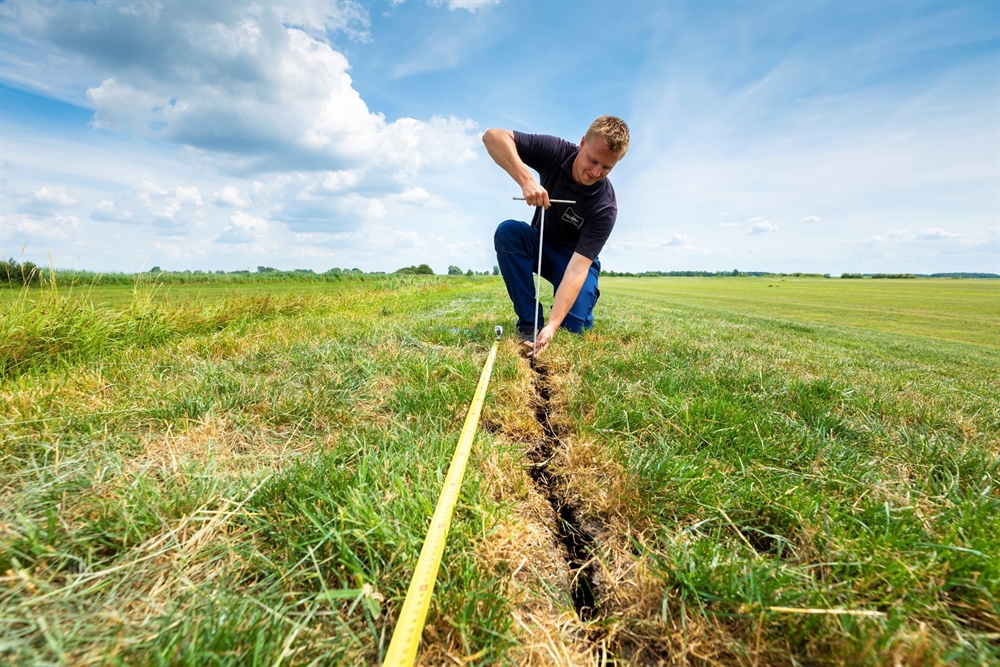Frisian strategy assists authorities and organisation in climate-proof developments
The Frisian climate adaptation strategy has been drawn up for all the Frisian municipalities, the province of Fryslân, and the Wetterskip Fryslân district water board. It can also be used by project developers, nature organisations, and other parties. The local and regional authorities in Friesland have drawn up this strategy collectively and are inviting everyone to utilise it.
How has the strategy been developed?
In the Frisian Water Chain Administrative Agreement 2016-2020, the province, the district water board, and the municipalities of Friesland agreed to tackle the regional elaboration of the Delta Plan on Spatial Adaptation collectively. Their efforts are continued under the Frisian Water and Climate Administrative Agreement 2021-2025. An administrative control group supervises the entire process, from Analysis to Ambition and Action:
- Analysis: the end of 2018 saw the publication of the Friesland Climate Atlas. The Atlas contains the results of the climate stress test covering the entire province of Friesland and the Groninger Westerkwartier rural area, which falls under the authority of the Wetterskip Fryslân district water board. With this Climate Atlas, the Frisian authorities have mapped out potential high-risk locations in terms of waterlogging, drought, heat, and flooding.
- Ambition: the municipalities and the district water board subsequently conducted risk dialogues with a range of parties. The Frisian Climate Adaptation Strategy was compiled on the basis of the Friesland Climate Atlas, the results of the risk dialogues, and existing strategies contained in policy plans.
What is the purpose of the strategy?
The strategy provides guidelines. It indicates the direction rather than the solution. The strategy is intended to guide the stakeholder dialogue on climate-proofing the province of Fryslân. It serves as the basis for authorities and other organisations to set down measures, in mutual consultation, aimed at climate-proof development and construction.
What does the strategy entail?
The province of Fryslân comprises six types of landscape, each requiring a different approach. This adaptation plan, therefore, contains a fact sheet setting out potential strategies for each type of landscape. In addition to these specific approaches, the plan also contains generic strategies that can be implemented in every area. Furthermore, it contains recommendations for those who are implementing the strategy.
Strategies per type of landscape
The six types of landscape in Friesland are: peat area, clay area, sand area, Wadden islands, urban landscape, and village landscape. The individual fact sheets feature a cross-section of each type of landscape, with the climate effects and the potential strategies. In this respect, it is important to realise that measures being implemented in one type of landscape may impact another type of landscape. For example: changes in the groundwater level in the (low-lying) peat grassland areas will affect the groundwater level and thus the availability of fresh water at the (elevated) sandy soils of the plateau extending into the province of Drenthe.
Generic strategies
In addition to the landscape-specific strategies, the document sets out several strategies that bear universal application. The main generic strategies are:
- Water retention – storage – drainage
- Water retention – building up water stock – letting in water
These two strategies enable Friesland to cope more efficiently with water surpluses and water shortages. The following strategies can also be applied universally:
- More greenery and water, less pavement. Greenery retains water and helps to combat heat stress;
- Climate-adaptive construction. For example, buildings must be sufficiently high (above normative maximum drainage basin level) in order to prevent waterlogging due to flooding;
- Raising awareness of the impact of climate change, in order to encourage residents to take measures and change their behaviour. Climate-conscious individuals will be more inclined to replace their garden pavement with greenery and to economise their drinking water consumption;
- Not all nuisance and damage can be prevented: acceptance and behavioural adjustment are also forms of adaptation.
Recommendations for those implementing the strategy
The plan also features the following recommendations:
- Climate-adaptive development and construction must become the new standard. As this may require additional space, it would be wise to take this strategy into account in spatial planning at the earliest possible stage. For example, take the recommendations in the strategy into consideration when selecting locations and making design choices. Look for opportunities to link climate adaptation to such other societal taskings as the energy transition.
- Set down your own ambitions by reference to a societal risk analysis. This enables you to collectively decide on the situations in which you want or do not want to take measures to reduce the risk of damage.
- Link climate adaptation to other societal taskings, e.g., those relating to energy, the restoration of biodiversity, or the transition to a circular economy.
Lessons to be learned
The Frisian authorities have given the following tips for drawing up a provincial climate adaptation strategy:
- Survey what has already been accomplished and build on that;
- Tie in with the requirements that have been put forward;
- Do not make your plan too technical and detailed: technical detail elaborations go out of date rather fast and leave less scope for users;
- Working with different types of landscape makes measures identifiable;
- Ensure ownership and garner support among the users.
Contact persons
Karel Veeneman
Wetterskip Fryslân
kveeneman@wetterskipfryslan.nl
Arie van der Sluis
Gemeente Leeuwarden
arie.vandersluis@leeuwarden.nl

